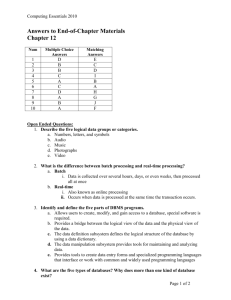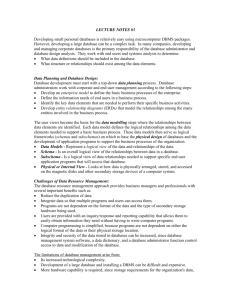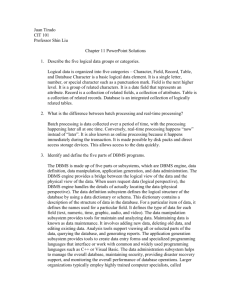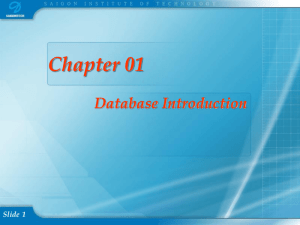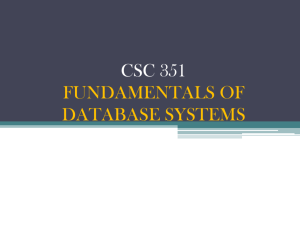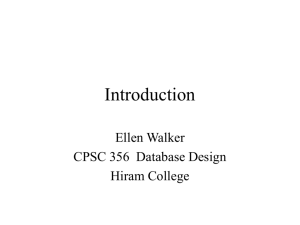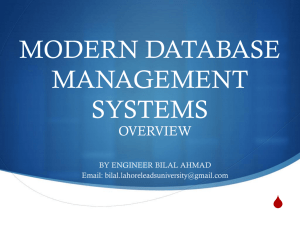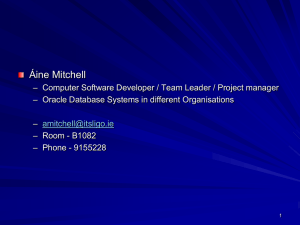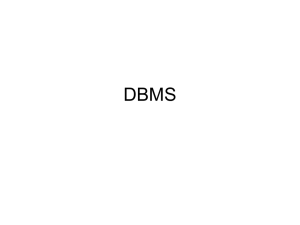Databases
advertisement
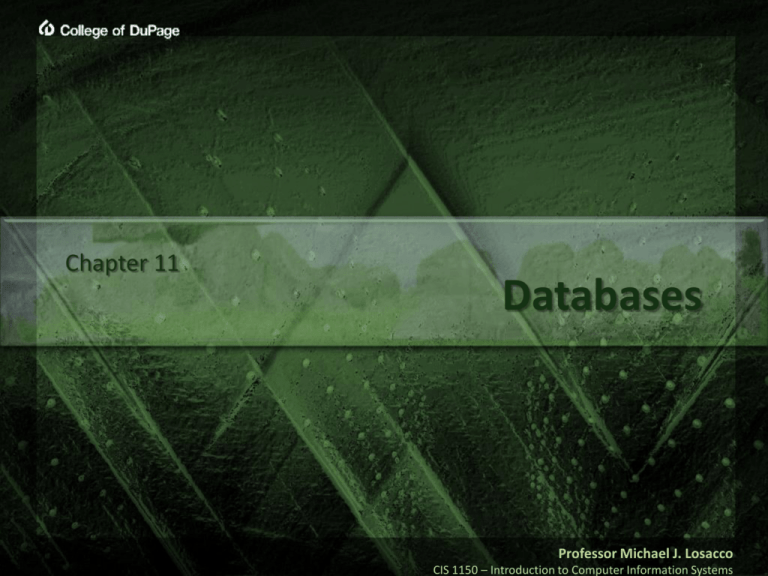
Chapter 11 Databases Professor Michael J. Losacco CIS 1150 – Introduction to Computer Information Systems Overview Chapter 11 Describe How Data is Organized Define Key Fields Compare Batch and Real-time Processing Define Five Common Database Models Distinguish the Kinds Of Databases Discuss Strategic Uses and Security Concerns 2/15 Data Organization Chapter 11 Field Combination of Related Characters Characteristics Name Uniquely Identifies Each Field Data Type Size Record Group of Related Fields Key Field AKA Primary Key Uniquely Identifies Each Record 3/15 Data Organization Chapter 11 Table Collection of Related Records Each Record Contains Same Fields Each Field Contains Different Data Database Group of Related Tables 4/15 Batch and Real-time Processing Chapter 11 Batch Processing Data Collected Over Several Hours, Days, or Weeks Processed All at Once as a “Batch” Real-time Processing AKA Online Processing Data Processed at Same Time Transaction Occurs 5/15 Databases Chapter 11 Need Sharing Information Readily Shared Between Departments Security Users Access Only the Kind of Information They Need Less Data Redundancy Redundancy Causes Inefficient Use of Storage Space Data Maintenance Problems Data Integrity Multiple Sources of Data Lead to Variations 6/15 Databases Chapter 11 Validation Comparing Data with Set of Rules Reduce Data Entry Errors Enhance Data Integrity Types Alpha / Numeric Range Completeness Consistency 7/15 Database Management Chapter 11 Database Management System (DBMS) Subsystems DBMS Engine Bridges Logical View and Physical Views of Data Data Definition Data Dictionary 8/15 Database Management Chapter 11 Database Management System (DBMS) Subsystems Data Manipulation Query-by-example, SQL Application Generation Data Entry Forms Data Administration Maintaining Security Processing Rights 9/15 DBMS Structure Chapter 11 Models Hierarchical One-to-many Relationship Rigid Structure Network Many-to-many Relationship Flexible and Efficient 10/15 DBMS Structure Chapter 11 Models Relational No Hierarchical Access Paths Data Elements Stored in Different Tables Consist of Rows (Records) & Columns (Fields) Each Row Has Primary Key Related Tables Must Have Common Field 11/15 DBMS Structure Chapter 11 Models Multidimensional Data Viewed as a Cube Having Three or More Sides Represent Complex Relationships Between Data Click Stream Object-oriented Stores Data in Objects Can Contain Both Data and Actions 12/15 Types of Databases Chapter 11 Individual Primarily Used by Just One Person Company Stored on a Central Database Network Server Distributed Not All Data Physically Located in One Place Accessible Through a Variety of Networks Commercial Large Database that Covers a Specific Subject Access Offered to the Public for a Fee 13/15 Database Uses and Issues Chapter 11 Strategic Uses Data Warehouse Data Mining Business Directories Demographics Business Statistical Text Web 14/15 Careers in IT Chapter 11 Database Administrator Determine Ways to Organize and Access Data Maintain Database Security Back Up System Bachelor's Degree in Computer Science Technical Experience Annual Salary of $67,000 - $98,000 15/15
